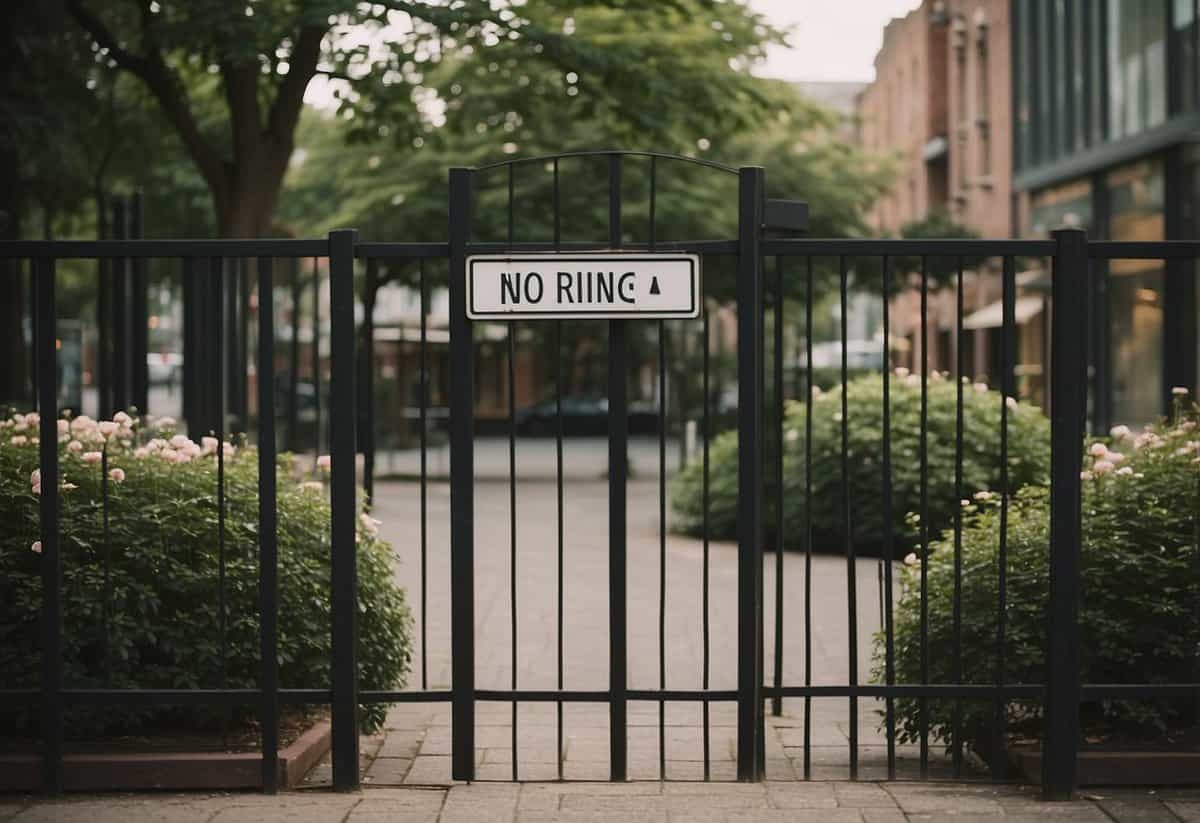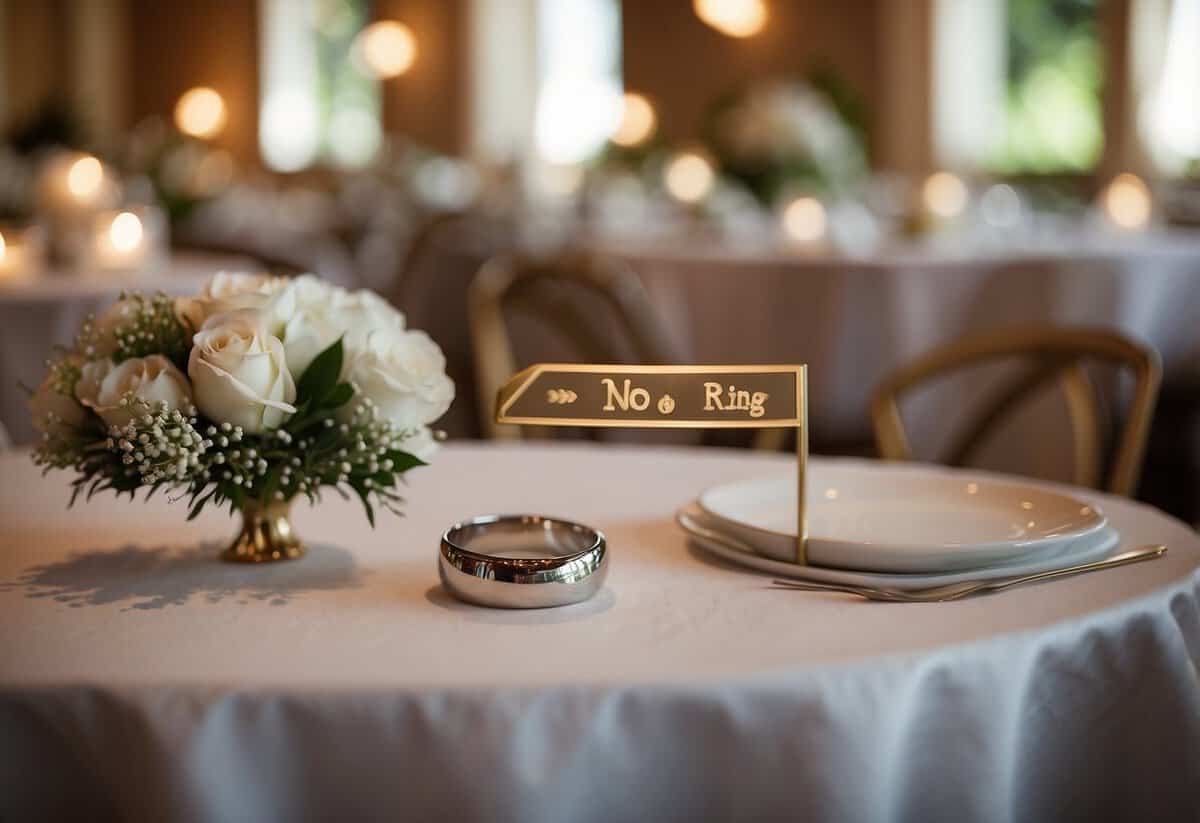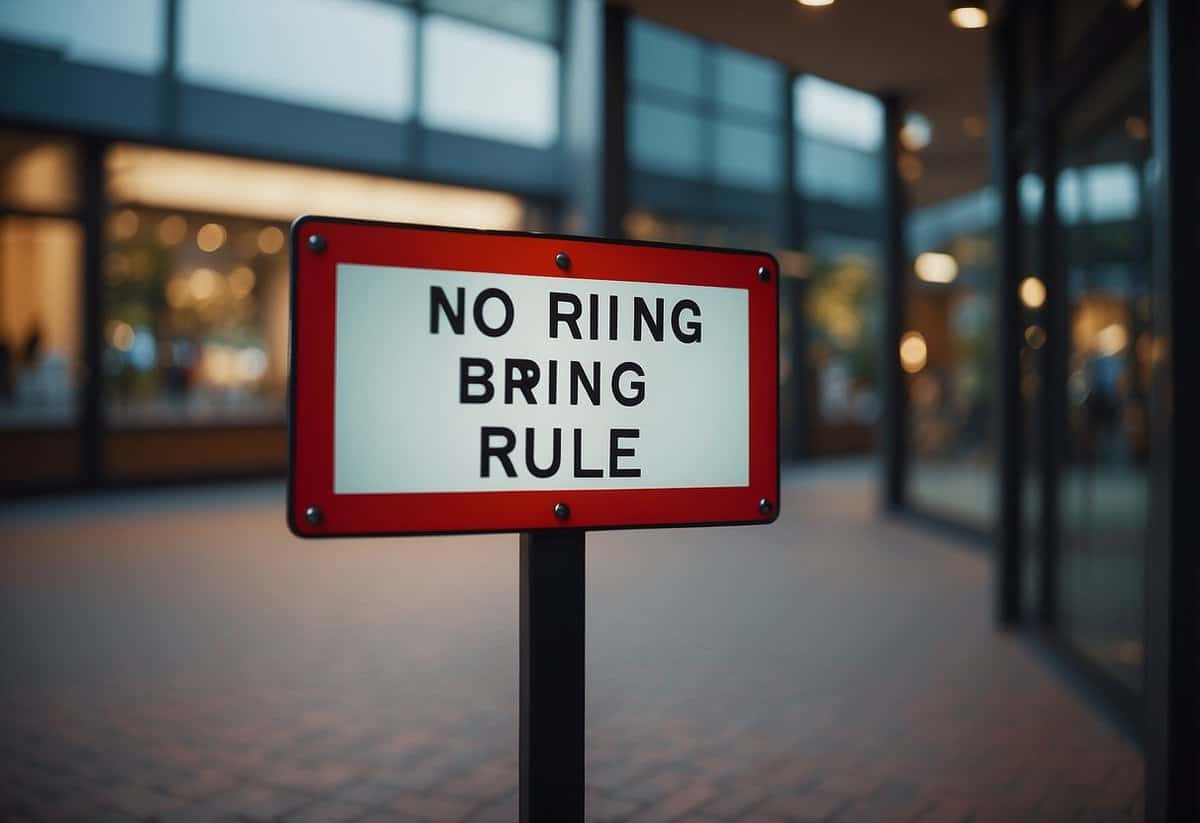What is the No Ring No Bring Rule? Understanding Wedding Guest Etiquette
Planning a wedding can be both exciting and challenging, especially when it comes to deciding who makes the guest list. The “no ring, no bring” rule is a popular policy where only guests who are married or engaged are allowed to bring a plus-one to the wedding. This can be a lifesaver for couples looking to trim down their guest list without offending too many people. It ensures that your special day remains intimate and controlled, both in terms of costs and relationships.

By implementing the “no ring, no bring” rule, you can avoid the awkwardness of having to invite temporary or less serious significant others. It’s about recognizing committed relationships that are likely to last, which can bring a sense of warmth and closeness to the event. This rule was notably used by Pippa Middleton during her 2017 wedding, making it a trend among many couples today.
Think about it: weddings are expensive, with some meals costing £80-a-head. Cutting down on extra plus-ones can save you significant money, which you can then use to create a better experience for your invited guests. Embracing this rule can help you keep the celebration within budget while ensuring that the people who matter most are there to share the joy of your big day.
Origin of the ‘No Ring, No Bring’ Policy
The “No Ring, No Bring” policy has become a notable wedding rule over the years. By exploring its cultural roots and high-profile examples, you can understand why this policy is popular at certain events.

Cultural and Social Background
The “No Ring, No Bring” rule means you can only bring a plus-one to a wedding if you’re engaged or married to them. This is rooted in earlier traditions when weddings were smaller, and the focus was on close family and friends.
In the past, people married younger and often didn’t live together before marriage. This rule made sense for those social norms. Today, many couples live together and have long-term commitments without a ring, making the rule seem outdated.
However, it remains popular because it saves money and helps keep the guest list manageable. Weddings can be expensive, and this policy is a way to control costs while maintaining an intimate gathering.
High-Profile Examples
Pippa Middleton and James Matthews’s wedding is a famous example where the “No Ring, No Bring” policy was used. This rule attracted attention when it was revealed Prince Harry and Meghan Markle, who were dating at the time, were exceptions. Meghan’s attendance highlighted how strict the policy can be and showed it’s sometimes flexibly applied for high-profile guests.
This policy often gets media attention when used by celebrities or royals, making it seem exclusive. The idea behind it is to keep events private and ensure only those with significant relationships to the couple attend, preserving the event’s personal nature.
By using this policy, high-profile individuals aim to make their weddings more private and focused. This keeps the celebrations special and avoids unnecessary public scrutiny.
Understanding the Rules

Navigating the “no ring, no bring” policy can be tricky, especially when trying to balance wedding guests’ feelings with budget concerns. This guidance covers what the rule means and when exceptions might be made.
Defining the Rule
The “no ring, no bring” rule means that only guests who are married or engaged can bring a plus-one. If a guest is in a long-term relationship but not yet married or engaged, they likely won’t be allowed to bring their partner. This helps couples keep their guest list manageable and the wedding budget under control. It was popularized by notable weddings, like Pippa Middleton’s, and usually applies consistently to all guests. Understanding this rule is key for smooth wedding planning.
Common Exceptions
Exceptions might be made in certain situations to avoid hurt feelings or awkwardness. For example, if someone has been in a long-term relationship for several years, even though they aren’t married, it might be considerate to let them bring their partner. Another exception could be close family members or friends who are expected to be married soon. Couples might also bend the rule for guests traveling from far away to avoid them feeling isolated. Balancing these exceptions with the overall guest list is important for a harmonious celebration.
Implications for Guests and Hosts

The “No Ring, No Bring” rule affects both guests and hosts in unique ways. Guests may feel excluded, especially if they’re in long-term relationships without a ring, while hosts can benefit from streamlined planning and budget control.
Impact on Wedding Guests
This rule can be a touchy subject for guests. If your partner isn’t invited because you’re not engaged, it may feel like your relationship isn’t being valued. This can be particularly hard for those in long-term commitments.
Limited invitations also mean less socializing with friends or family members, making the event feel less inclusive. On the flip side, a smaller guest list could lead to a more intimate atmosphere where you can better connect with others at the wedding.
Hosts’ Perspective and Benefits
For hosts, the primary benefit is managing the budget and venue capacity. Weddings can be incredibly expensive, and this rule helps keep guest numbers—and costs—under control. It’s easier to provide a quality experience for a smaller group.
Setting clear guidelines makes planning more straightforward and less stressful. The limited guest list can create a more personal, meaningful celebration. Moreover, guests who are close friends and family members are generally more understanding of these constraints.
Enforcing this rule means fewer logistical concerns, such as seating arrangements and catering, allowing you to focus more on enjoying the big day.
Navigating Relationship Dynamics

Understanding how to manage relationships when implementing the “no ring, no bring” rule is essential. It’s important to consider the feelings of your guests and communicate clearly to avoid misunderstandings.
Dealing with Disappointment and Drama
When you decide on the “no ring, no bring” rule, not everyone will be happy. Some people may feel left out if they can’t bring their significant other. It’s crucial to acknowledge their feelings and be empathetic.
You can explain that this rule helps keep the guest list manageable and within budget. This way, it’s clear that the decision isn’t personal. A short, honest conversation can prevent hurt feelings and make your guests understand your perspective.
If someone reacts negatively, stay calm and polite. Address their concerns but stick to your decision. It’s your special day, and managing it according to your plan is your prerogative. A calm approach often defuses tension and drama before it escalates.
Communication Strategies
Clear communication is key when implementing the “no ring, no bring” rule. Start by addressing this rule in your invitations. Include a brief note explaining the reason behind it. This prepares your guests from the outset.
When people ask about it, be straightforward. You might say, “To keep our wedding intimate and manageable, we decided on this rule.” This reduces any room for misinterpretation.
Using positive language can also help. Instead of focusing on who can’t come, emphasize how you’re excited to celebrate with those who are invited. This shift in tone can make the message feel more inclusive and considerate.
Considerations for Implementation

When implementing a “No Ring, No Bring” rule, it is crucial to manage your guest list effectively and balance financial considerations with relationships.
Guest List Management
One key aspect of the “No Ring, No Bring” policy is streamlining the guest list. This rule can help you narrow down who should join your special day, ensuring only close and significant relationships are present. It greatly simplifies decisions and reduces awkwardness in choosing guests.
By inviting only those in committed relationships, either married or engaged, you create a more intimate atmosphere. This method helps to avoid inviting casual or short-term partners. It also ensures that all guests feel genuinely connected to the couple and the event.
Having a clear and consistent rule keeps things straightforward, minimizing hurt feelings or awkward social dynamics. Everyone understands the criteria, and you can avoid picking and choosing among your friends’ and family members’ significant others.
Balancing Budget and Relationships
Financially, the “No Ring, No Bring” rule can save a considerable amount by reducing the number of attendees. This means you can invest more in other aspects of the wedding, such as venue, food, or decorations, enhancing the experience for those who do attend.
Even though you’re saving money, remember the importance of key relationships. Some couples choose not to marry but have deep, long-term commitments. Consider making exceptions for those significant, well-known partnerships to maintain good relationships and honor long-term commitments.
Balancing these factors requires careful thought. Inform your guests politely about the rule, making it clear your decision is aimed at creating the best day possible while being fair and consistent. This way, you can enjoy a smooth planning process and a wedding day filled with joy and strong relationships.




